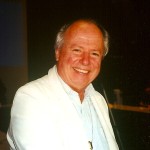Palmyra, Syria: Protection of the Cultural Heritage of Humanity in Periods of Armed Conflict
TRANSCEND MEMBERS, 25 May 2015
Rene Wadlow – TRANSCEND Media Service
22 May 2015 – In a 15 May 2015 message to Madame Irina Bokova, UNESCO Director General, the Association of World Citizens highlighted its Appeal for a Humanitarian Ceasefire in and around Palmyra, Syria, a UNESCO Heritage of Humanity site. On the 15th of May, there was an intensification of fighting around Palmyra between the forces of ISIS and the government. A humanitarian ceasefire was an appropriate measure at that time. Now, it seems that the ISIS forces have taken control of the city and some of the area around it. Thus the Appeal of the Association of World Citizens must be addressed to the leadership of the ISIS, although the Association of World Citizens has no direct communication avenues to the ISIS.
Palmyra is a rich contribution to the cultural heritage of all the Syrian people, no matter to what political faction they may now belong. Moreover, Palmyra is for all of humanity a moving example of trade routes such as the Silk Road and cultural exchanges through the centuries. For some 400 years, Palmyra was an important outpost of the Roman Empire, a link between the Gulf and the Mediterranean.
We believe that if ISIS wishes to be seen as a valid participant in future negotiations concerning the future of Syria and Iraq, it must show its willingness to respect world law. The protection of the cultural heritage of humanity is an important element of world law binding on States, non-governmental organizations (NGOs) and individuals.
The Association of World Citizens works in the tradition of the Roerich Peace Pact and its Banner of Peace for the protection of cultural institutions.
Early efforts for the protection of educational and cultural institutions were undertaken by Nicholas Roerich (1874-1947) a Russian and world citizen. Nicholas Roerich had lived through the First World War and the Russian Revolution and saw how armed conflicts can destroy works of art and cultural and educational institutions. For Roerich, such institutions were irreplaceable and their destructions was a permanent loss for all humanity. Thus, he worked for the protection of works of art and institutions of culture in times of armed conflict. Thus he envisaged a universally-accepted symbol that could be placed on educational institutions in the way that a red cross had become a widely-recognized symbol to protect medical institutions and medical workers. Roerich proposed a “Banner of Peace” − three red circles representing the past, present and future − that could be placed upon institutions and sites of culture and education to protect them in times of conflict.
Roerich mobilized artists and intellectuals in the 1920s for the establishment of this Banner of Peace. Henry A. Wallace, then the US Secretary of Agriculture and later Vice-President was an admirer of Roerich and helped to have an official treaty introducing the Banner of Peace − the Roerich Peace Pact − signed at the White House on 15 April 1935 by 21 States in a Pan-American Union ceremony. At the signing, Henry Wallace on behalf of the USA said “At no time has such an ideal been more needed. It is high time for the idealists who make the reality of tomorrow, to rally around such a symbol of international cultural unity. It is time that we appeal to that appreciation of beauty, science, education which runs across all national boundaries to strengthen all that we hold dear in our particular governments and customs. Its acceptance signifies the approach of a time when those who truly love their own nation will appreciate in additions the unique contributions of other nations and also do reverence to that common spiritual enterprise which draws together in one fellowship all artists, scientists, educators and truly religious of whatever faith.”
As Nicholas Roerich said in a presentation of his Pact “The world is striving toward peace in many ways, and everyone realizes in his heart that this constructive work is a true prophesy of the New Era. We deplore the loss of libraries of Lou vain and Overdo and the irreplaceable beauty of the Cathedral of Rheims. We remember the beautiful treasures of private collections which were lost during world calamities. But we do not want to inscribe on these deeps any worlds of hatred. Let us simply say : Destroyed by human ignorance − rebuilt by human hope.”
Today, as citizens of the world, we must build upon these pioneer efforts to protect the testimonies of humanity’s constant evolution toward beauty, harmony and peace.
___________________________________
René Wadlow, a member of the Fellowship of Reconciliation and of its Task Force on the Middle East, is president and U.N. representative (Geneva) of the Association of World Citizens and editor of Transnational Perspectives. He is a member of the TRANSCEND Network for Peace, Development and Environment.
This article originally appeared on Transcend Media Service (TMS) on 25 May 2015.
Anticopyright: Editorials and articles originated on TMS may be freely reprinted, disseminated, translated and used as background material, provided an acknowledgement and link to the source, TMS: Palmyra, Syria: Protection of the Cultural Heritage of Humanity in Periods of Armed Conflict, is included. Thank you.
If you enjoyed this article, please donate to TMS to join the growing list of TMS Supporters.

This work is licensed under a CC BY-NC 4.0 License.
